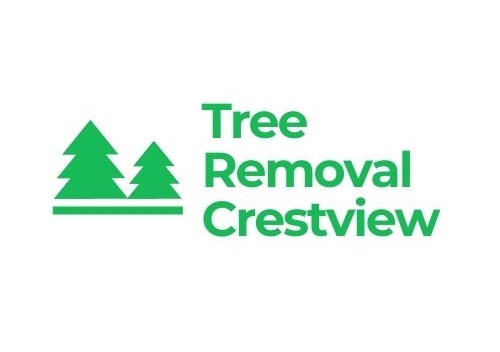Arborist
Trees are an essential part of our environment, contributing to the beauty of landscapes, improving air quality, and supporting wildlife. However, maintaining healthy trees requires expertise and care, which is where professionals like arborists, tree surgeons, and tree doctors come in. This article explores the roles of these professionals, the importance of arboriculture, and the associated costs, licensing, and certification.
Understanding Arborists, Tree Surgeons, and Tree Doctors
Arborist: An arborist is a professional who specializes in the cultivation, management, and study of trees, shrubs, and other woody plants. Arborists are knowledgeable about the needs of trees and are trained and equipped to provide proper care. Proper tree care is an investment that can lead to substantial returns, such as beautiful, healthy trees and added value to property.
Tree Surgeon: Often used interchangeably with the term arborist, a tree surgeon is a specialist who focuses on the physical maintenance of trees. This includes activities like pruning, felling, planting, and treating damaged or diseased trees. The term “tree surgeon” highlights the precision and care needed when working with trees, similar to how a surgeon operates on human patients.
Tree Doctor: A tree doctor, also known as a plant pathologist, is an expert in diagnosing and treating tree diseases and pests. They are highly skilled in understanding the signs of tree health issues and prescribing appropriate treatments. While an arborist may be involved in the general care and maintenance of trees, a tree doctor is more focused on the specific health problems of trees.
Tree Arborist: The term “tree arborist” is often used to emphasize the arborist’s specialization in tree care. While all arborists have knowledge of tree care, a tree arborist may have specific expertise in the complex biology and care needs of trees.
The Role of Arboriculture
Arboriculture: Arboriculture is the science and practice of tree care, encompassing everything from planting and growth to maintenance and removal. It involves understanding the biology and ecology of trees, as well as the techniques for managing them in urban and suburban settings. Arboriculture is crucial for ensuring the health and safety of trees, which can prevent potential hazards like falling branches or tree collapse.
Arborists and tree surgeons play a vital role in arboriculture by applying their expertise to manage and maintain trees. This includes tasks like pruning, which helps shape trees and remove dead or diseased branches; cabling and bracing, which support weak branches; and tree removal, which is sometimes necessary when a tree poses a safety risk.
Costs and Pricing in Arboriculture
The costs associated with hiring an arborist, tree surgeon, or tree doctor can vary significantly based on several factors:
- Type of Service: Routine services like pruning or trimming are generally less expensive than more complex services like tree removal or treating a diseased tree.
- Size and Species of the Tree: Larger trees or those that are more challenging to work with (due to their species or location) will often cost more to service.
- Location: Prices can vary depending on the region and whether the tree is in an easily accessible area or in a hard-to-reach spot.
- Emergency Services: If you require immediate service, such as after a storm, expect to pay a premium for emergency tree work.
- Equipment and Safety: The type of equipment needed (e.g., cranes, harnesses) and the safety precautions required for the job can also influence the cost.
Average Costs
- Tree Pruning/Trimming: This can range from $200 to $1,200 per tree, depending on the size and complexity of the job.
- Tree Removal: The cost for tree removal can vary widely, typically ranging from $500 to $2,500 per tree. The price depends on the tree’s height, diameter, and location.
- Stump Grinding: To remove the remaining stump after a tree has been cut down, costs usually range from $100 to $500, depending on the size of the stump.
- Tree Health Assessments: Consultation and health assessments by an arborist or tree doctor can cost between $50 and $150 per hour.
Licensing and Certification
When hiring an arborist or tree surgeon, it is essential to ensure that they are licensed and certified. This not only guarantees a certain level of professionalism but also ensures that the individual has the necessary training and knowledge to perform the work safely and effectively.
Licensing: Licensing requirements for arborists vary by location. Some regions or municipalities require arborists to hold a specific license to operate legally. This license may involve passing a written exam and demonstrating practical skills.
Certification: Certification is a voluntary process that arborists can undergo to demonstrate their expertise and commitment to the profession. One of the most recognized certifications is from the International Society of Arboriculture (ISA). The ISA Certified Arborist credential is awarded to professionals who have met all the requirements and passed an extensive exam covering all aspects of tree care.
Other certifications include:
- Tree Risk Assessment Qualification (TRAQ): Focuses on the skills and knowledge required to assess tree risk.
- Certified Tree Worker Climber Specialist: Demonstrates proficiency in climbing and working safely in trees.
- Certified Arborist Utility Specialist: Specializes in tree care around power lines and other utilities.
The Importance of Hiring Local, Certified Professionals
Hiring a local, certified arborist or tree surgeon is essential for several reasons:
- Knowledge of Local Species: Local arborists have in-depth knowledge of the tree species common in your area and the specific challenges they may face, such as local pests or climate conditions.
- Regulatory Compliance: Local professionals are familiar with regional regulations and ordinances regarding tree work, ensuring that all work is performed legally.
- Support for Local Economy: By hiring a local arborist, you support the local economy and may also benefit from more personalized service.
- Quick Response Times: Local professionals can respond more quickly to emergencies, such as storm damage or hazardous tree conditions.
Conclusion
The care and maintenance of trees are not just about aesthetics; it’s about ensuring safety, preserving the environment, and enhancing the value of your property. Arborists, tree surgeons, and tree doctors are essential professionals who bring expertise and care to every job. Understanding the costs, licensing, and certification involved in arboriculture can help you make informed decisions when it comes to tree care.
Whether you’re looking to prune a few branches, diagnose a tree disease, or remove a hazardous tree, investing in a qualified, certified professional is crucial for the health of your trees and the safety of your property. As with any service, it’s wise to obtain multiple quotes, check references, and confirm the credentials of the professionals you hire to ensure the best results. Go here for more about our services.

